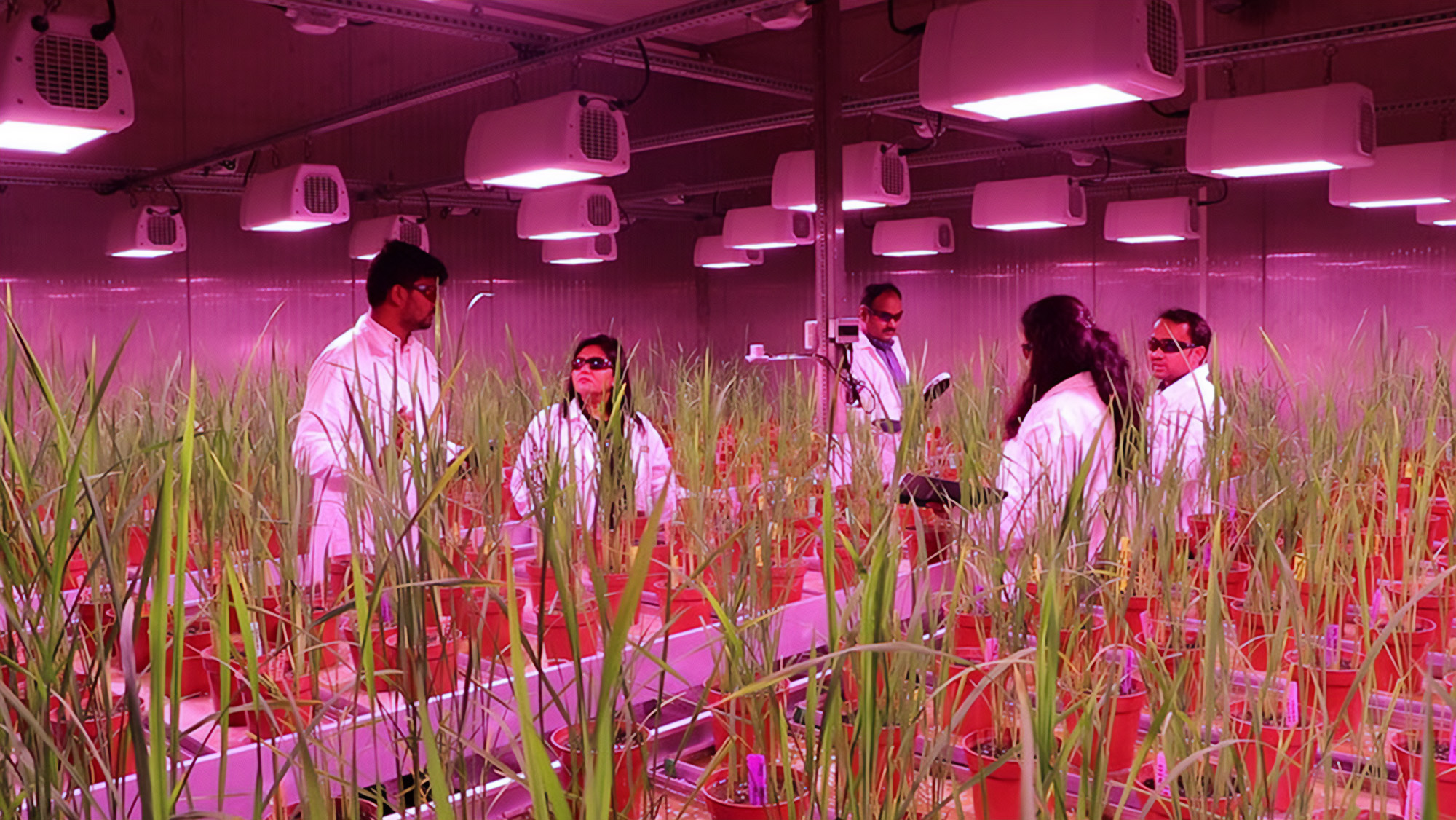IRRI develops first speed breeding protocol for rice

VARANASI, INDIA, 18 December 2023 – Scientists from the International Rice Research Institute (IRRI) developed a robust, first ever speed breeding protocol for rice that will achieve 4 to 5 crops of rice in one year - almost double of what has been possible in breeding programs until now. This protocol will be important to accelerate breeding new improved varieties of rice to cope with climate change and the needs of a growing world population.
Called SpeedFlower, the protocol focuses on optimizing light spectrum, amount and intensity, along with temperature, humidity and other variables that expedite growth, flowering and maturity in rice. The protocol is suitable for the vast majority of rice grown globally, including for indica and japonica rice.
“We can now develop new high-yielding, climate-resilient, and nutritionally superior rice varieties in a much shorter duration. This is a major scientific step toward significantly boosting genetic gain in rice, ultimately contributing to global food security,” said program lead Drs. Vikas Kumar Singh, Uma Maheshwar Singh, and Pallavi Sinha.

The success of Speed breeding in other crops led to the establishment of a state-of-the-art SpeedBreed facility at the ISARC in Varanasi, India. To achieve speed breeding in rice, the facility has been customized with controlled growth parameters using fully enclosed walk-in growth chambers.
“SpeedFlower demonstrates a remarkable impact of speed breeding on crop research. With this protocol, we can expedite crossing and inbreeding activities, completing them within 1.5–2 years instead of the usual 6–7 years required in the field,” said ISARC Director, Dr. Sudhanshu Singh.

SpeedFlower described
The protocol focuses on optimizing light spectrum, intensity, photoperiod, temperature, humidity, nutrient levels and hormonal regulation to expedite growth, flowering and maturity in rice. It has demonstrated flowering within just 60 days for tested rice varieties and achieved a 50% reduction in seed maturity time, irrespective of their natural flowering durations.
A subset of 198 genotypes, representing 12 diverse sub-groups of Oryza sativa L. from the 3,000 Rice Genomes Project (3K RGP) was selected to validate the optimized SpeedFlower in the speed breeding facility at ISARC. The subset was chosen based on their molecular diversity, different flowering durations and geographic locations. In field conditions, the flowering time of these genotypes ranged from 58 to 127 days. However, when grown under the optimized SpeedFlower, all 198 genotypes successfully flowered within a shorter period of 58 days. The protocol's significant reduction in flowering time for photosensitive and late-duration genotypes, along with remarkable synchronization among segregating generations, addresses a major bottleneck in breeding programs.

The SpeedBreed Facility and the innovative SpeedFlower protocol mark a significant leap in rice breeding, addressing generation time and seasonal constraints. The optimized protocol works for all the maturity durations (early, medium and late) of indica and japonica rice and enables synchronous flowering.
Partnerships for SpeedBreed and SpeedFlower
Considered as a model facility for speed breeding in rice, IRRI plans to establish a consortium to offer support services to National Agricultural Research and Extension Systems (NARES) and private companies on establishing and operating speed breeding facilities.
The protocol will be further refined for enhanced output and comprehensive testing will be done to a broader range of rice genotypes. The program proponents aim to further collaborate with NARES, including other centers under the CGIAR, to leverage shared knowledge and expertise toward optimizing the protocol for other crops.
“We continue to push research boundaries to develop innovations that are urgently needed in light of a growing food and climate crises. This breakthrough sets the new standard toward accelerating genetic gains for global food security,” said IRRI Interim Director General, Dr. Ajay Kohli.
The study behind the protocol was led by Drs. Vikas Kumar Singh, Uma Maheshwar Singh, and Pallavi Sinha and was developed with funding support from the Department of Biotechnology (DBT), Government of India. The research has been conducted as part of the collaborative research project with the Indian Council of Agricultural Research (ICAR).
Learn more about the SpeedFlower protocol here.